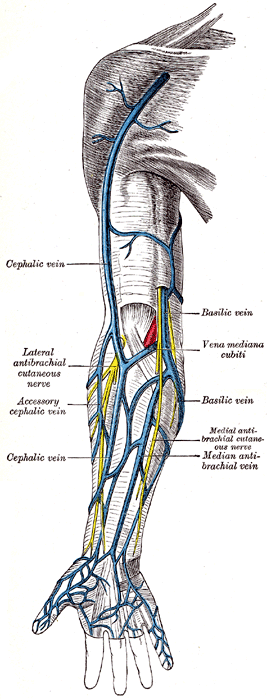| Median cubital vein | |
|---|---|
 | |
| Details | |
| Source | Cephalic vein |
| Drains to | Basilic vein |
| Identifiers | |
| Latin | v. mediana cubiti, v. intermedia cubiti |
| TA98 | A12.3.08.019 |
| TA2 | 4980 |
| FMA | 22963 |
| Anatomical terminology | |
In human anatomy, the median cubital vein (or median basilic vein) is a superficial vein of the arm on the anterior aspect of the elbow. It classically shunts blood from the cephalic to the basilic vein at the roof of the cubital fossa. It is typically the most prominent superficial vein in the human body, and is visible when all other veins are hidden by fat or collapsed during a shock.
Contents
It arises from the cephalic vein 2.5 cm (one inch) below the lateral epicondyle of the humerus, runs obliquely upward and medially, and empties into the basilic vein 2.5 cm (one inch) above the medial epicondyle.
It is routinely used for venipuncture (taking blood) and as a site for an intravenous cannula. This is due to its particularly wide lumen, and its tendency to remain stationary upon needle insertion.


